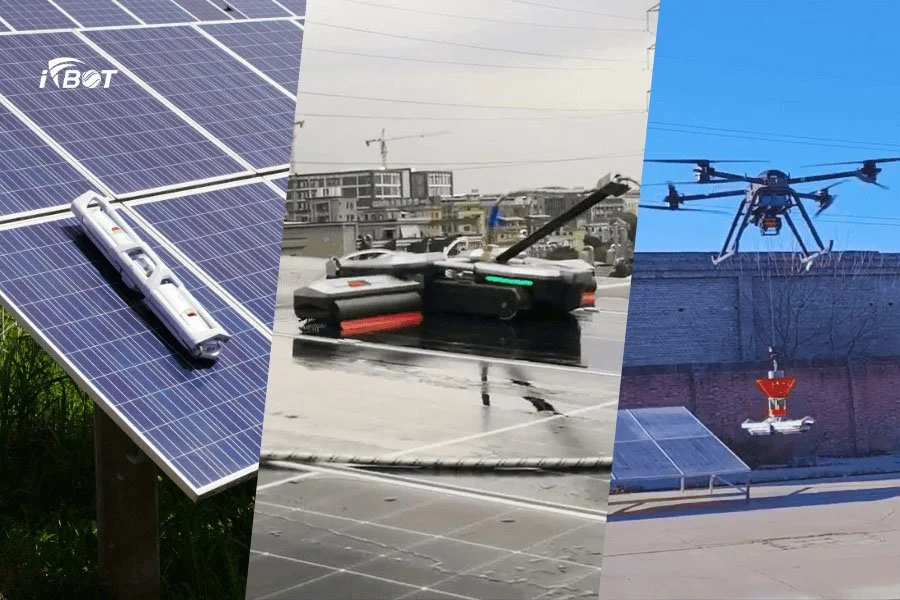Are Automatic Solar Panel Cleaners Worth It?
As solar energy adoption accelerates worldwide, one question continues to surface among solar panel owners: “Are automatic solar panel cleaners really worth it?” Whether you manage a small residential rooftop system or a 100 MW solar farm, the efficiency of your panels depends heavily on keeping them clean. Dust, dirt, pollen, bird droppings, and industrial residue can reduce output by up to 25–35% in high-soiling environments.
Automatic solar panel cleaning robots—like IFBOT X3 (dry-cleaning), M20 (water-cleaning), and our UAV-integrated system—are designed to address these challenges. But are they truly a worthwhile investment? Let’s examine the facts through the lens of experience, expertise, authoritativeness, and trustworthiness.
Why Clean Solar Panels Regularly Matters
Studies show that dirty panels can lead to:
Reduced Efficiency: Soiling can cut output by 10–30% depending on location.
Hot Spots: Dirt buildup causes uneven heating, potentially damaging cells.
Shorter Lifespan: Panels with consistent dirt accumulation degrade faster.
For homeowners, that could mean higher energy bills. For solar farm operators, it could mean millions in lost revenue annually.
Manual vs. Automatic Cleaning: A Practical Comparison
Manual Cleaning
Pros: Low initial cost, accessible for small residential systems.
Cons: Labor-intensive, inconsistent results, safety risks for workers on rooftops, high water consumption, and potential damage from incorrect tools.
Automatic Cleaning Robots
Pros:
Consistent and thorough cleaning
Significant labor and water savings
Safer for workers (no climbing or risky maneuvers)
Proven efficiency gains—up to 35% more energy output in dusty environments
Operates autonomously, even at night
Cons: Higher upfront cost (but offset by ROI within 1–2 years in most commercial cases).
Real-World ROI: Are They Worth the Investment?
A 1 MW solar farm losing just 5% efficiency due to dirt can forfeit $15,000–$20,000 per year in lost revenue (depending on electricity rates).
Robotic cleaning typically restores that loss and more, often paying back the upfront cost within 12–24 months.
For larger farms (10 MW+), the financial benefits multiply exponentially.
Environmental Impact: A Hidden Advantage
Traditional cleaning methods can waste thousands of liters of water per cleaning session. IFBOT X3 uses zero water, while M20 features Dynamic Mud-Water Separation to recycle and minimize consumption. Combined with UAV deployment, these systems cut down water usage, fuel costs, and carbon footprints—making them the eco-friendly choice for sustainable solar O&M.
Which IFBOT Solution Fits Your Needs?
IFBOT X3: Ultra-light, waterless, perfect for rooftops and water-scarce regions.
IFBOT M20: High-power dual-brush cleaner with water recycling for stubborn grime.
IFBOT UAV System: Drone-deployed cleaning for large-scale and hard-to-reach installations.
Explore more about each product:
👉 IFBOT X3
👉 IFBOT M20
👉 IFBOT UAV
Final Verdict: Are They Worth It?
Yes—automatic solar panel cleaners are worth it for anyone serious about maintaining energy efficiency, reducing operational costs, and ensuring long-term sustainability. The upfront investment quickly pays for itself in energy gains, reduced labor, and minimized water usage.
As the solar industry continues to expand, automation isn’t just a luxury—it’s becoming the standard for smart maintenance. IFBOT’s suite of robotic solutions empowers solar owners to maximize efficiency, extend panel lifespan, and lower environmental impact.
🌞 Ready to make your panels shine with less effort?
👉 Contact IFBOT today to explore the right solution for your solar installation.



